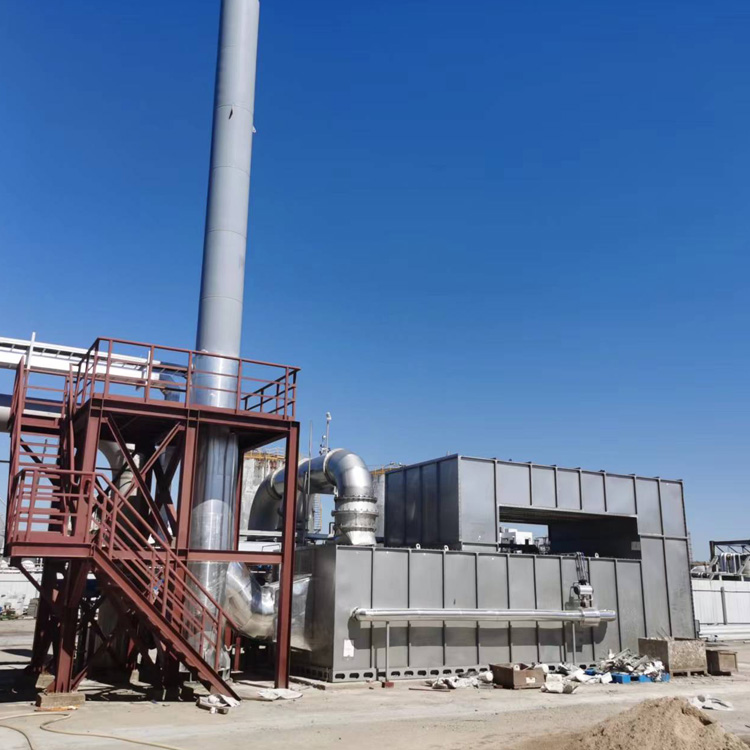Principles of Catalytic Combustion Equipment
2024-05-23
Catalytic combustion equipment is used to enhance combustion processes through the use of catalysts, which enable more efficient and cleaner burning of fuels. This technology is widely applied in various industries to reduce emissions and improve energy efficiency. Here’s a detailed overview of catalytic combustion equipment:
Principles of Catalytic Combustion
Catalytic combustion involves the use of a catalyst to lower the activation energy required for combustion. The catalyst promotes oxidation of the fuel at lower temperatures than traditional combustion methods, resulting in:
- Complete Combustion: More thorough burning of hydrocarbons, reducing unburned fuel and carbon monoxide emissions.
- Lower Emissions: Reduced formation of nitrogen oxides (NOx), particulate matter, and other pollutants.
- Energy Efficiency: Enhanced thermal efficiency due to lower required combustion temperatures.
Key Components
1. Catalysts:
- Types: Precious metals (platinum, palladium, rhodium) or base metals (copper, manganese).
- Form: Typically coated onto a ceramic or metallic substrate with a high surface area.
- Function: Facilitate oxidation reactions at lower temperatures.
2. Combustors:
- Structure: Designed to hold the catalyst and ensure optimal contact between the fuel/air mixture and the catalyst surface.
- Materials: Often made of materials that can withstand high temperatures and corrosive environments.
3. Air and Fuel Management Systems:
- Mixing: Ensure a homogeneous mixture of fuel and air for efficient catalytic combustion.
- Controls: Regulate the flow rates and ratios to maintain optimal combustion conditions.
4. Heat Exchangers:
- Purpose: Recover waste heat from the combustion process to improve overall energy efficiency.
- Design: Can be integrated with the combustor to preheat incoming air or fuel.
Applications
1. Industrial Heating:
- Use: Furnaces, boilers, and process heaters in industries such as chemicals, refining, and metal processing.
- Benefits: Reduced fuel consumption and lower emissions.
2. Power Generation:
- Use: Gas turbines and combined heat and power (CHP) systems.
- Benefits: Improved thermal efficiency and compliance with stringent emission regulations.
3. Pollution Control:
- Use: Catalytic incinerators and oxidizers for the destruction of volatile organic compounds (VOCs) and hazardous air pollutants (HAPs).
- Benefits: Achieve regulatory compliance and minimize environmental impact.
4. Automotive:
- Use: Catalytic converters in vehicle exhaust systems.
- Benefits: Reduction of CO, HC, and NOx emissions from internal combustion engines.
Advantages of Catalytic Combustion
1. Environmental:
- Significant reduction in pollutants such as CO, NOx, and VOCs.
- Lower greenhouse gas emissions due to improved combustion efficiency.
2. Economic:
- Potential for fuel savings through more efficient combustion.
- Reduced maintenance costs due to fewer soot and particulate deposits.
3. Operational:
- Lower operating temperatures reduce thermal stress on equipment.
- Enhanced safety due to lower risk of explosive combustion conditions.
Challenges and Considerations
1. Catalyst Deactivation:
- Causes: Fouling, sintering, and poisoning by impurities in the fuel or air.
- Solutions: Regular maintenance, use of high-quality fuels, and proper pre-treatment of the fuel/air mixture.
2. Cost:
- Initial investment in catalytic combustion equipment can be high, especially for systems using precious metal catalysts.
- Long-term savings through improved efficiency and compliance with emissions regulations can offset initial costs.
3. Operational Parameters:
- Precise control of air/fuel ratios and temperatures is crucial for optimal performance.
- Advanced control systems and sensors are often required to maintain optimal conditions.
Conclusion
Catalytic combustion equipment plays a crucial role in enhancing combustion efficiency and reducing emissions across various industries. By utilizing catalysts to promote more complete and efficient combustion at lower temperatures, these systems offer significant environmental and economic benefits. However, careful consideration of operational parameters and maintenance requirements is essential to maximize their effectiveness and longevity.



